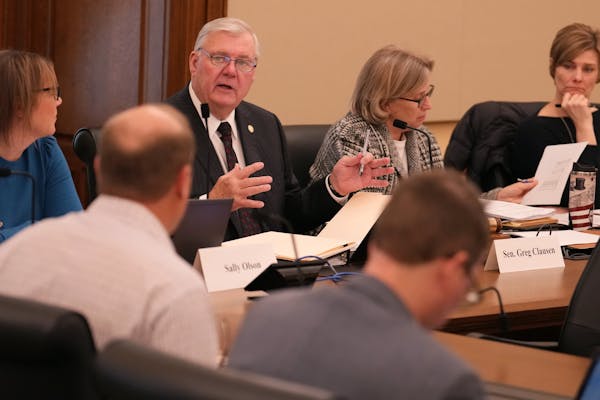Ashlee Ramirez remembers vividly the excitement she felt in her first weeks on the University of Minnesota's Twin Cities campus last year.
She arrived early for a multicultural orientation program, where she met long-lasting friends. She moved into a dormitory designed to support Latino students, many of whom spoke Spanish and understood her experiences as a Mexican American woman.
But as the thrill of starting college began to die down, she said, "That was when it first hit me: Now I attend my classes and it would be … just me that looked like me."
The U's Twin Cities campus celebrated a milestone this fall when it enrolled its most ethnically and racially diverse freshman class. Just over a third of the 6,737 incoming freshmen identify as people of color, almost double the percentage from a decade ago. The number of Black, Hispanic and Indigenous students increased, with applications from each of those groups up more than 20% compared to the prior year.
Students say they welcome the increase and are grateful the U offers cultural programs — but they're still hoping for additional changes to help them feel supported and more empowered after they arrive.
The campus has focused on efforts to reduce disparities in educational performance, achieving near parity in retention rates in recent years. But it is also increasingly focused on "what else is happening in their lives," said LeeAnn Melin, associate vice provost for student success.
"This isn't just the U of M," she said. "This is a national conversation."
Colleges across the United States are adjusting their recruitment strategies as they brace for a steep decline in enrollment in the coming years, due in part to a dip in the birth rate in the early 2000s. They're also trying to reach a wider array of students as the pool of high school graduates becomes more racially and ethnically diverse.
To boost enrollment, U admissions officers say they're relying on a mix of old and new strategies. The university for decades has employed multicultural recruiters, but it now also has an associate director who focuses on expanding partnerships with community groups, learning more about youths' needs and helping coordinate group visits to campus.
The U continues to offer the virtual meetings and tours that it relied on at the height of the COVID-19 pandemic. And it's increasingly trying to reach students via text messages and on social media platforms like Snapchat, Instagram and TikTok.
"We're constantly looking for opportunities to help students understand the options, the programs and support at the university to help them achieve their long-term goals and dreams," said Keri Risic, interim executive director of admissions.
Part of that effort, Risic said, means ensuring that the U's roughly two dozen admissions officers stay up to date on the types of services available on campus, including cultural groups.
Those cultural groups are a highlight of many students' experiences, said Flora Yang, president of the undergraduate student government. She said students are seeking a "more tangible commitment" to diversity after a regent's remarks reignited a public debate about diversity on college campuses.
Different life experiences
Two months ago, Regent Steve Sviggum asked at a public meeting if it was possible the U's Morris campus had become "too diverse" from a marketing perspective. Yang — who just applied to become a regent herself — said students are calling on regents to interact with them more often and respond directly to their concerns about issues like mental health and public safety.
Ramirez, a sophomore, learned about Sviggum's remarks on Instagram. She said that while his words validated what she'd been feeling on campus, "Did I really want those feelings to be true?"
Ramirez felt at ease at the Mi Gente LatinX Student Cultural Center, which aims to provide a safe space for all students and promote cultural awareness. In class, she said, it sometimes felt like the differences between her life experiences and those of the white students, who outnumbered her, were glaring.
When she was assigned a speech on dentistry, other students in her group seemed to assume that everyone has consistent access to a dentist. Not Ramirez, who was able to see one again when she enrolled at the U and received health benefits.
While other students hurried to register for classes in hopes they could schedule a three-day weekend, Ramirez worried about registering early so she could accommodate her work schedule.
But when she thinks about what might be done to make the campus more welcoming, Ramirez said some of it is up to the students themselves.
"I think the university can only do so much," she said — though she added it would be helpful to have more scholarships and make the financial aid process easier.
Melin said the U continues to examine its data to figure out what additional programs it could offer to reduce inequities. In recent years, she said, university officials have increasingly focused on efforts to help students cover basic needs like food and housing, gain access to mental health supports, and obtain scholarships.
"If a student has been admitted to the university, we believe they can be successful and graduate," Melin said. The goal, she said, is to support them in that effort — and that "looks different for different students."

Could a big week for St. Paul's Union Depot hint at a brighter future?

Neal: What happens after you win a national title?

Minneapolis English teacher named Minnesota Teacher of the Year 2024

